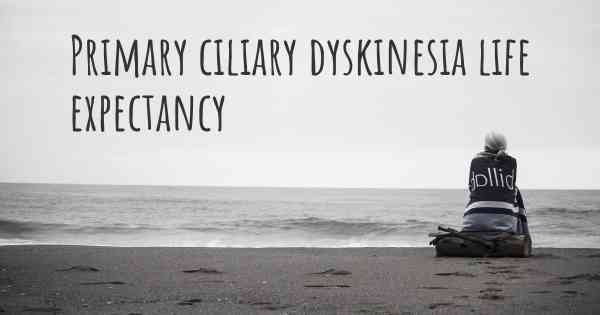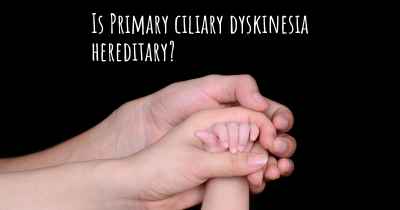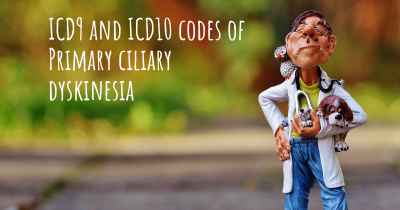What is the life expectancy of someone with Primary ciliary dyskinesia?
Life expectancy of people with Primary ciliary dyskinesia and recent progresses and researches in Primary ciliary dyskinesia

Primary ciliary dyskinesia (PCD) is a rare genetic disorder that affects the cilia, tiny hair-like structures in the respiratory tract. PCD can lead to chronic respiratory infections, hearing loss, and fertility issues. The life expectancy of individuals with PCD can vary depending on the severity of symptoms and the management of complications. While there is no specific data on life expectancy for PCD, early diagnosis and appropriate treatment can significantly improve outcomes. Regular monitoring, prompt treatment of infections, and respiratory therapies can help manage symptoms and enhance quality of life. It is crucial for individuals with PCD to work closely with healthcare professionals to develop a personalized care plan.
Primary ciliary dyskinesia (PCD) is a rare genetic disorder that affects the function of cilia, which are tiny hair-like structures found on the surface of cells in various parts of the body. These cilia play a crucial role in moving mucus and other substances along the respiratory tract, reproductive system, and other organs.
PCD is a chronic condition that typically manifests early in life, often during infancy or childhood. The severity of symptoms can vary widely among individuals, making it challenging to predict the exact life expectancy for someone with PCD. However, with advancements in medical care and management strategies, individuals with PCD are living longer and leading fulfilling lives.
Respiratory complications are the most common and significant health issues associated with PCD. The impaired ciliary function leads to ineffective clearance of mucus and debris from the airways, resulting in recurrent respiratory infections, chronic cough, and progressive lung damage. These respiratory complications can significantly impact the quality of life and overall health of individuals with PCD.
Early diagnosis and proactive management of respiratory symptoms are crucial in improving outcomes for individuals with PCD. Treatment approaches may include airway clearance techniques, inhaled medications, antibiotics to manage infections, and regular monitoring of lung function. In severe cases, lung transplantation may be considered as a last resort.
Aside from respiratory complications, PCD can also affect other organs and systems in the body. These may include chronic sinusitis, hearing loss, fertility issues, and abnormalities in organs like the heart and kidneys. The impact of these additional complications on life expectancy can vary depending on their severity and the individual's overall health.
It is important to note that PCD is a chronic condition that requires lifelong management and care. Regular follow-ups with healthcare professionals who specialize in PCD are essential to monitor and address any emerging complications. Adhering to treatment plans, maintaining a healthy lifestyle, and avoiding environmental factors that can exacerbate respiratory symptoms are crucial for optimizing outcomes.
While there is no specific life expectancy range that can be universally applied to all individuals with PCD, advancements in medical knowledge and treatment options have significantly improved outcomes and increased life expectancy. With proper management and support, individuals with PCD can lead fulfilling lives well into adulthood and beyond.
Posted Mar 6, 2017 by pcdwhat 1100








